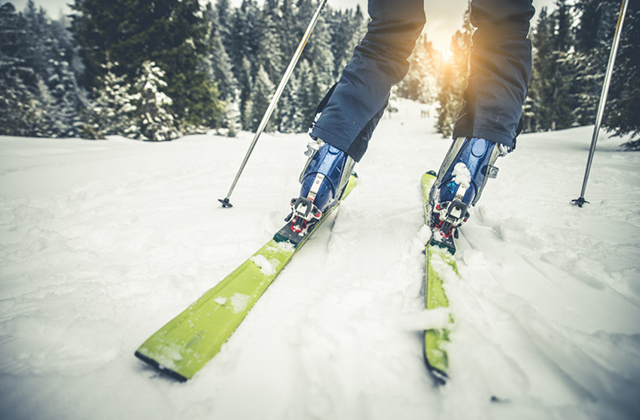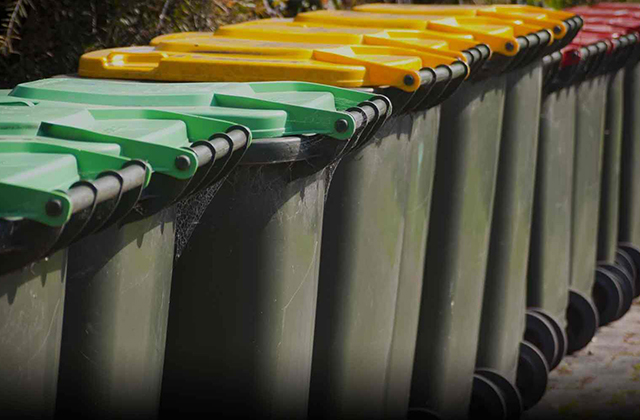In addition to Canada, which is considered the most important heli skiing Canada destination in the world, the particular activity of off-piste skiing / free riding is also becoming popular in other parts of the world such as Alaska, New Zealand, Italy, Switzerland, Chile, Argentina and even the Himalayas. The exercises that have been selected, serve a specific purpose of preparing your body for the forces and the demands that you will be exposed to while you ski. To help you accomplish this goal, exercise does not need to look like the sport that you are training it for. Exercise is simply movement. It is our goal to move your body in a variety of different movement patterns that will help you handle whatever is thrown at you. With this program, your body will be challenged in ways that are similar to the challenges that you will face while skiing. It will be difficult the first time you do it and your muscles will get sore from it. You MUST stick with it consistently to get the benefits and the results that you are looking for. Through hard work and diligence you can expect the best results and expect to enjoy your upcoming ski season.
Discover Movement LLC assumes NO LIABILITY due to any actions undertaken as a result of reading this program.
CAUTION:
Always consult a physician before starting an exercise program
Complete a thorough warm-up before embarking on your workout
Always finish your workout with a cool-down session
It is imperative that one follows proper progressions and does not rush into anything that they cannot do without control.
TRAINING SAFETY
Exercise in a pain-free fashion, it if hurts don’t do it.
Move with deliberate control. Make all of your movements smooth and coordinated.
The first few ski magazines make their way around in August. It starts all over again, the fantastic cycle that we look forward to; the ski season. We are sure that during the summer, many of you just walk past your skis in the garage and don’t even glance at them. While a few select others might still have those shapely skis up in the bedroom and you playback those intimate memories that you both shared in the past.
Either way, come early fall, you start putting together plans for that first ski vacation and can’t wait until that departure date arrives. You do your research and finalize your ski trip with all the necessary reservations that secure your date in snow heaven. Now you have the calendar marked at work, at home, and quite honestly; anywhere and everywhere to keep it fresh in your head.
Now what do you do? Just keep working and wait until the day arrives? Or do you prepare your gear, your mind, and your body for the adventure about to come? The good news is that there are a few simple things that you can do to “winterize” your body and improve your skill this season. The bad news is that a countless number of skiers will do nothing and will end up putting a damper on their ski trip and possibly their entire ski season by not taking a few simple steps.
Every year we plan at least one ski vacation to hit the slopes in search of that feeling we had when we first skied. Nobody goes away to have a miserable or a bad time; although, sometimes things happen to really put a “ka bash” on the whole trip. These can include things like injuries, aches, pains, or things like not being able to progress to the next level, or not being able to ski with the rest of the group. That doesn’t sound like a “good time” to any of us. We go away with family of friends to have a blast and hopefully etch those memories into our minds forever (all the famous “watch this” wipeout stories that we will never forget!).
Let’s face it; there is a lot of stress being placed on the body while we are on the slopes. With so many terrain options like the steeps, glades, moguls, terrain parks, and the backcountry, we all could use a little “tune up” to help us deal with all these environments a little better. In addition to the numerous terrain options, the conditions also vary from day to day and resort to resort. From ice to powder, and hard pack to mashed potatoes, there are so many different overall conditions that the body must be able to sense, interpret, and translate into the beautiful language we know as skiing.
Get ready to have the best season you have ever had! Your approach will be different this time. Your preparation will provide the perfect recipe as you get on the lift and get ready to kick off your first run of your most memorable ski season.
CHAPTER 1
If it’s broke, fix it!
We all remember our first day every season where we can feel muscles we never knew we had and in places we never knew existed. The next few days are spent walking around like we got off a horse! The good news is that there is something you could do about this (unless you are a sadist). The better news is that it is not only your solution for your sore issues (pun completely intended), but it will also help you ski faster, harder, longer, and more consecutive days. Doesn’t this sound like it will help you have a great vacation?
CHAPTER 2
Sharpen Your Edges-Ski Exercise program
We have the secret to help you beat your friends down the mountain this season and looking good doing it! These tips can be executed entirely by themselves or in addition to any current fitness program. You can do them anywhere; at home, at the gym, or even outdoors. Feel free to get anyone involved (except your friends) and even your kids can do it!
Sharpen Your Edges is a perfect pre-season tool that you can use to help you prepare yourself for your ski vacation or your entire ski season. As we mentioned earlier, the goal of all the movements is to get your body to “think” and move in ways that will help you perform better while you are on the slopes. So read on and get ready to be challenged!
“Sharpen Your Edges – Ski Conditioning Recipe”
(VIDEO AND PICTURES OF THE EXERCISES AT http://WWW.TRAINFORSKIVACATION.COM)
The Recipe:
Perform
all ingredients sequentially with minimal rest. All exercises are to
be done for the specific number of repetitions. Once you perform one
whole circuit, rest for 2 MINUTES. Then repeat the ENTIRE circuit for a
second time. You will always perform 2 sets of the program. In
addition, your repetitions for each movement will be to complete a total
of 10 repetitions. For any exercise that has 20 reps as the goal, it
is so you get 10 reps on each side. The program should be done 3
alternative days a week.
The Progression:
The only alterations in the program will be the REST period. The following template will utilize a 6 Week Training Program. Everyone will start at Week 1 and work their way to Week 6.
Weeks 1-2 60 Second Rest
Weeks 2-4 30 Second Rest
Weeks 4-6 0 Rest (This is a crowd favorite!)
The Ingredients:
1. Inchworm: GOALS – Hip Mobility/Core Strength/Core Stabilization
Start the exercise in a push-up position. Walk forward with your feet (towards your hands), inching forward with small steps while keeping your knees locked out and hands flat on the ground. Continue walking forward until your feet are flat on the ground. At that point, walk forward with the hands until you are back in the push-up position. Perform 10 repetitions and move on to the next movement.
2. Spiderman: GOALS – Hip Mobility/Core Endurance
Take a long lunge and place the hands down on the ground (inside the knee) in line with the front foot. Try to keep the back knee locked out as much as possible. Then stand up and step forward with the next foot and repeat. Take 20 steps and continue to the next exercise.
3. Single Leg Balance Reach: GOALS – Core Endurance/Core Stabilization/Leg Deceleration
Stand next to a wall or another tall object and balance on one foot. Take your other leg and reach with your toes and your hands as if you are trying to touch the object. Then return to the starting position. Perform 10 repetitions and then switch legs. When you are finished, continue to the next exercise.
4. Skater to Hold: GOALS – Hip Power/Hip Strength/Hip Mobility/Core Stabilization
Stand on your right leg and jump to your left and landing on your left foot. You want to land with a soft and absorbent landing. When you land, stick and hold the landing for 2 seconds before you take your next jump. Your goal with the landing is to land as far as you can control and balance. Do 20 repetitions in an alternating pattern and then continue.
5. Backwards Squat Jump: GOALS – Hip Power/Hip Strength/Hip Mobility/Core Stabilization
Jump up and backwards and land in a squat position. Your goal is to land on the balls of the feet; with the hips back. Perform 20 repetitions and then continue to the next exercise. *NOTE – You will probably be a little warm by now!
6. Hip Twister: GOALS – Core Strength/Core Stabilization/Core Endurance/Hip Mobility
Start in a push-up position. Focusing on your hips, twist one side and push the hips down towards the floor. Alternating sides, repeat for 20 repetitions and then continue to the next exercise.
7. Single Leg Squat w/Reach Down: GOALS – Hip Strength/Hip Mobility/Core Strength/Core Endurance
Stand on one foot and squat down (slow and controlled) and reach down in front of you with your opposite hand. Keep the weight on the heel of your foot. Your opposite leg should be straight and in the air behind you. Do 10 repetitions and then switch legs.
8. Alternating Lunge Jump: GOALS – Hip Power/Hip Strength/Hip Mobility/Core Endurance/Core Stabilization
Position yourself in a lunge position. Jump up and switch legs in the air so that when you land your opposite leg is in front of you. Your landing should be soft and quiet. Jump up and land 20 times so you get 10 repetitions on each leg.
9. “Fonzie” Quick Legs: GOALS – Hip Power/Core Stabilization
Set
yourself up in a squat position with your feet together. As fast as
possible, move your feet out (to about shoulder width) and then back
together. Think about keeping your head at the same height without
moving up and down. Do this for 20 reps as fast as possible. *Notice
the “thumbs up,” just like the Fonz!
10. Alternating T – Stabilization: GOALS – Core Strength/Core Stabilization/Core Coordination
Start in a push-up position. Lift one hand off the ground and turn your whole body to the side so it looks like a letter “T” on its side. Your eyes should stay focused on the hand that remains on the ground. Alternate the pattern for 20 repetitions and then this will be your first 2 minute rest period. *NOTE – If you are breathing hard and your heart rate is racing, then something is happening!
Overall Program Goal: All of these movements combine various components of athleticism. Each exercise has a specific component(s), all of which will help you on the slopes. By performing them in a circuit, you help build muscular endurance which is vital for skiing. In addition, you can also help increase your lactate threshold (ability to tolerate those cooking quads). The first few times will be the hardest, but hang in there. Before you know it, you will be looking for more!
Sharpen You Edges
EXERCISE REPETITION REST INTERVAL PROGRESSIONS(secs.)
Inchworm 10 60/30/0
Spiderman 20 60/30/0
SL Balance Reaches 10 60/30/0
Skater to Hold 20 60/30/0
Hip Twister 20 60/30/0
SL Squat w/Reach 10 60/30/0
Alt. Lunge Jump 20 60/30/0
“Fonzie” Quick Legs 20 60/30/0
Alt. T-Stabilization 20 120 seconds
CHAPTER 3
Skiing translated!
The
demands that are placed on the body are very clear to everyone when we
ski for the first time every year. Depending on the style of skiing,
the body has to deal with many forces on our way down the slopes. The
body will move in a three dimensional way and your training should also
be performed in a multi-dimensional environment to expose your body to
the countless movements that it will be reflexively doing on the snow.
Whether we are in a turn loading the edges, racing down a slalom
course, going down a field of moguls or doing a run in the pipe, the
physical challenge with each scenario is not for the weak and frail.
Skiing requires a precise recipe of balance, strength, flexibility,
power, and endurance that can always be enhanced and will only lead to
greater success on the slopes. Any flaws in the required skills will
definitely impact someone during a ski trip, either on the slope or once
you get off the mountain and you walk like a penguin for the next two
days.
Our Body’s Requirements:
♦ HIP STRENGTH – Our hip musculature (quads/hamstrings/adductors/glutes) must be able to work in all three planes; concentrically, eccentrically, and isometrically. Think of this as the difference between jumping off the ground (concentric), landing on the ground (eccentric), and holding a squat position on the ground (isometric). Each of these places a different demand on our musculature.
♦ HIP POWER – The forces that we are exposed to on the slopes cannot be mimicked by traditional exercises (machine based). As we are in the middle of a carve, the force and power that we need to create to overcome the forces that are being placed on us are huge! As we link a string of carved turns together this process of loading and unloading the edges is being driven by a loading and unloading of the body. If you cannot load the body properly (and thus the skis), you will not be able to get an effective unloading response.
♦ HIP MOBILITY – Think of your whole body as giant a
shock absorber. We need to be able to flex/extend,
internally/externally rotate, and laterally flex (this is 3 dimensional
movement) in order for us to be able to move. If the hip is restricted
in any way, then movement with have to come from somewhere else. This
is the body’s natural response to help us accomplish a task at hand.
This is also when that “extra” movement will come from either above or
below the hips (cranky back or barking knees). Think of your hips as
the crossroad to the rest of the body. Without proper function of the
hips, skiing may start to become a more labored activity, with more
repercussions and less enjoyment.
Our ability to drive the ski on its edge, stay on that edge and
follow through to the next turn, require certain specifics from our
movement machinery. Skiing is a complex task that requires a total body
response from head to toe.
Importance of the “Core:”
All movement is rotational. This means, among other things, that as your lower body executes a move, the upper body needs to respond in order to balance and support the movement. Any movement’s counter-rotation culminates right in the middle of the body, in the core of the body. The core is not just the “abs.” The core is the area that attaches the upper body to the lower body and vice versa. This famous area consists of hip, abdominal, and back muscles
♦ CORE STRENGTH – We need to remember that movement happens as a chain reaction in the body and without the active role by each member of the body, the force will “leak” at its weakest point. As the muscular communication of the extremities is centered in the core, it must be the strongest link in the chain. Without this vital communication, there is chaos.
♦ CORE STABILIZATION – As our spine is moved in all directions, it is the core muscles that keep a firm hold on our vital yet vulnerable part of the body. Many of our core musculature are deep and are not the superficial abdominal muscles. These core muscles function to protect the spine and act like a girdle to keep us happy in all that we do. Doing crunches or any other abdominal movement will not get the key core muscles firing. These “spineless” exercises will do little when you watch skiers move and see what the spine is going through in the middle of a field with moguls the size of VW beetles.
♦ CORE ENDURANCE – The core is responsible for keeping us in our ski pose and able to repeat it all day long. Once it gets tired, you are as good as done since you will probably be bouncing your chin off your knees. Our ability to stay tucked and maintain our posture while we manage our bodies on all types of terrain is one of the most important goals of skiing. Staying balanced and being aware of your center of gravity will benefit you greatly as you navigate all over the mountain. Think of your core as your insurance policy and that you are useless without it!
So take a look at how you train now. Is your current training program getting you ready to ride the chairlift to the bunny slope? Or are you training to get ready for those diamond runs that make you all warm and fuzzy inside?
CHAPTER 4
Even more benefits to ski training!
We must warn you of other known “side effects” that occur as a result of training this way. Your body will be moving in countless directions, various speeds, many positions and at higher intensities. The end result will be a body that not only moves better on the slopes, but a body that has less fat, more muscle, and looks better as you are getting into the hot tub.
Who wouldn’t want to lose a couple of pounds of fat? So do away with the extra stuff that just “weighs us down” and really serves no purpose. In addition, there are the less exciting benefits, like an improved cardiovascular system, lower blood pressure and cholesterol; you know all the things you need to stay alive. So enjoy being healthier, more agile, looking better, skiing better, and most importantly; enjoying your time away. You cannot say that we didn’t warn you!
CONCLUSION
What will this do for me?
There are few things to look for when trying to see the benefits of your ski vacation training. While on the slopes, you will be able to ski more aggressively and handle more extreme terrain. Sometimes it is the level of fitness that is holding us back from fine tuning our skills and making us better skiers. So now that your body has the ability to move and sustain forces better, go ahead and challenge yourself. Think of this as a form of athleticism. We all have seen athletes who dominate their sport and they make it look so “effortless” and “easy.” The same holds true for skiing. A skier who shows athleticism will be able to handle any terrain, in any condition and do it with excellence.
Conditioning yourself to be able to take less rest on every run (which means you get on the lift line sooner) and will enable you to get in more runs per day without feeling like you “ran out of gas.” When was the last time you skied hard all day and could brag about not having any aches or pains? So not only do you have the ability to enjoy the snow longer each day, but you can enjoy four or five days of skiing in a row and more importantly; live to talk about it!
We are providing your body the nourishment that it needs to prepare for skiing. Unlike the other effects from eating too much, an abundant supply of ski food will only help you more! With that said, now you can look to get out and practice hard, get lessons, and dial in your gear to help you improve to whatever level you wish to aspire to. You are ready!
So the next time you decide to plan a ski vacation, put yourself in a position where you can get the most out of your body and your movement vocabulary before you get on the skis. Your body will thank you and it will treat you much better before you decide to beat it up on your next ski trip.
Ski you later,
Tommi and Alex
For any questions or comments, seminars, or to book Tommi and Alex at your next event; please feel free to contact them with whichever method below that suits you best.
Tommi and Alex have a vision of helping everyone get the most out of their ski vacations. They feel that there are simple things that anyone at any level can do to get tremendous results both on and off the slopes.
Both are active outdoors men throughout the year and have “snow on the brains” all year round. Over the years, they have applied and practiced their philosophies in their “playground” to bring you the most cutting edge and effective training program.
Their goal is to make fitness fun as many view it as being torturous and boring. At times this may be true, but you will have a smile on your face with these guys, guaranteed. It is their philosophy that if you are having fun and if you have an inspired mindset, you will be that much more successful at accomplishing many new tasks.
EMAIL: [email protected]
ALEX CHEMEROV & TOMMI PAAVOLA
Article Source: https://EzineArticles.com/expert/Tommi_Paavola/66138
Article Source: http://EzineArticles.com/384286




